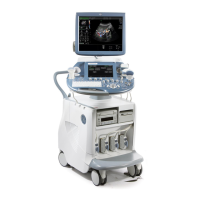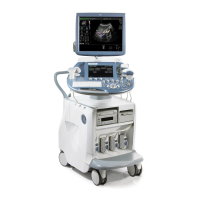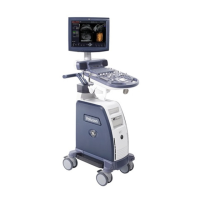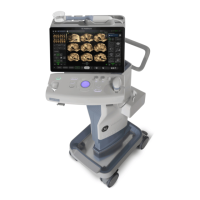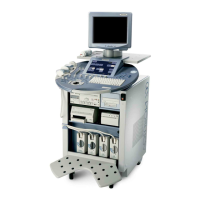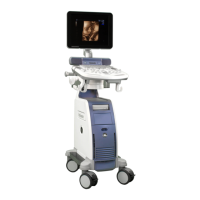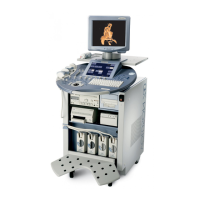GE HEALTHCARERAFT VOLUSON E8 / VOLUSON E6
D
IRECTION KTD102576, REVISION 7 DRAFT (AUGUST 23, 2012) SERVICE MANUAL
5-16 Section 5-2 - General Information
5-2-4-1 Advanced 4D
5-2-4-1-1 Real Time 4D
Real Time 4D mode is obtained through continuous volume acquisition and parallel calculation of
3D rendered images. In Real Time 4D mode the volume acquisition box is at the same time the
render box. All information in the volume box is used for the render process. In Real Time 4D mode
a “frame rate” of up 40 volumes/second is possible. By freezing the acquired volumes, size can be
adjusted, manipulated manually as known from the Voluson 3D Mode.
HDLive is an enhancement of the currently available Surface Rendering. The position of the virtual
light source may be altered to get a natural display with an optimized depth impression.
5-2-4-1-2 Real Time 4D Biopsy
For minimal invasive procedures like biopsies, ultrasound is a widely used method to visualize and
guide the needle during puncture. The advantage in comparison with other imaging methods is the
real-time display, quick availability and easy access to any desired region of the patient. 4D biopsy
allows for real time control of the biopsy needle in 3D multi-planar display during the puncture.
The user is able to see the region of interest in three perpendicular planes (longitudinal, transversal
and frontal section) and can guide the biopsy needle accurately into the centre of the lesion.
5-2-4-1-3 VCI - Volume Contrast Imaging
Volume Contrast Imaging utilizes 4D transducers to automatically scan multiple adjacent slices and
delivers a real-time display of the ROI.
This image results from a special rendering mode consisting of texture and transparency
information. VCI improves the contrast resolution and therefore facilitates finding of diffuse lesions
in organs. VCI has more information (from multiple slices) and is of advantage in gaining contrast
due to improved signal/noise ratio.
Static VCI is a part of the VCI option, which allow to apply the contrast enhancing VCI method to
3D data sets after the acquisition.
5-2-4-1-4 T.U.I. - Tomographic Ultrasound Imaging
TUI is a new visualization mode for 3D and 4D data sets. The data is presented as slices through
the data set which are parallel to each other. An overview image, which is orthogonal to the parallel
slices, shows which parts of the volume are displayed in the parallel planes.
This method of visualization is consistent with the way other medical systems such as CT or MRI,
present the data to the user. The distance between the different planes can be adjusted to the
requirements of the given data set. In addition it is possible to set the number of planes.
The planes and the overview image can also be printed to a DICOM printer, for easier comparison
of the ultrasound data with CT and/or MRI data.
5-2-4-2 DICOM
Software package providing following DICOM functionality:
• Storage Service Class
• Print Management Service Class
• Structured Reporting Service Class
• Storage Commit Service Class
• Modality Performed Procedure Step Service Class
BT-Version:
HDLive is only available at Voluson E8/Voluson E8 Expert systems with BT12 and BT13 software.
The HDLive feature is part of the “Advanced 4D” option.
